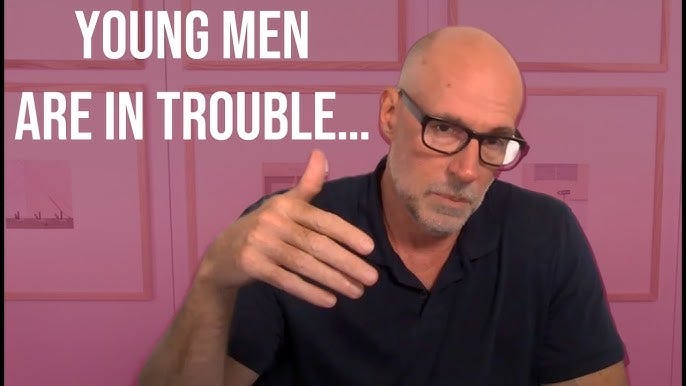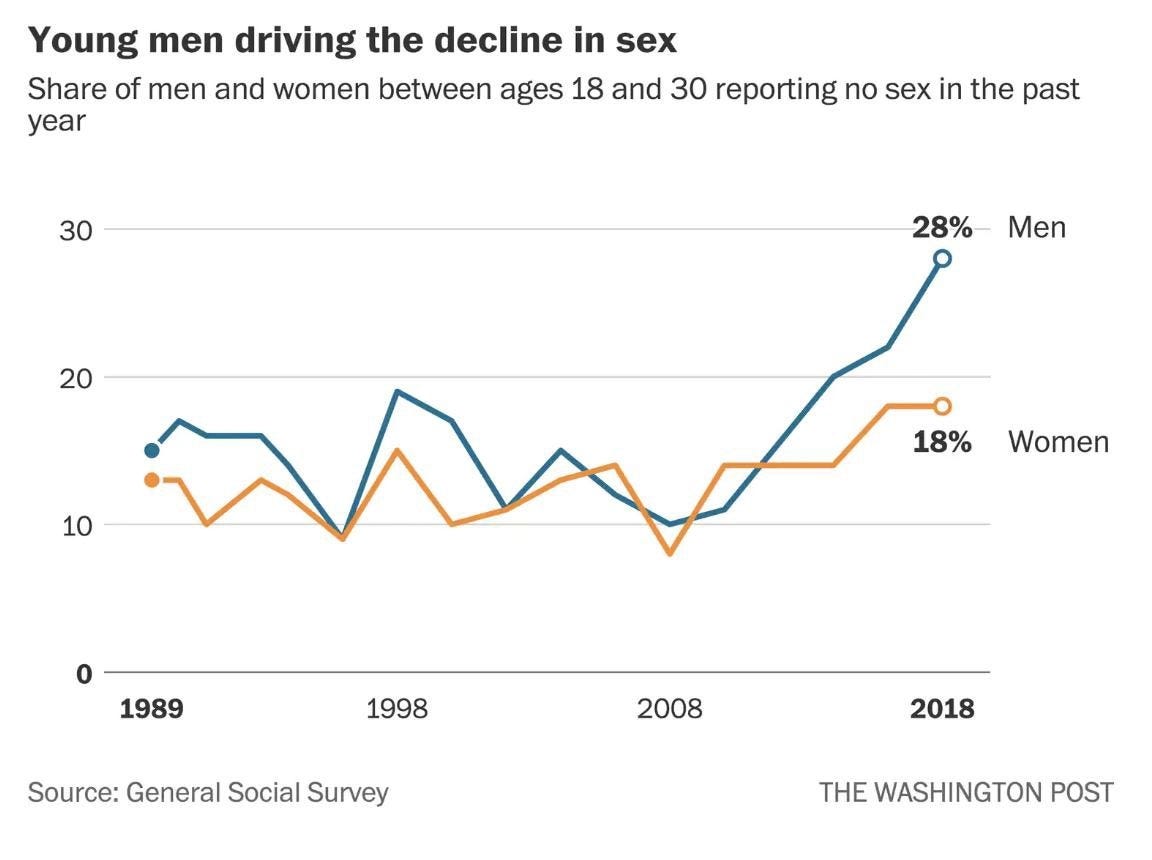Saratoga Water Morning Routines & The Future of Crypto Communities
It's time for crypto communities to be fun like they were during the '21 NFT run
Last Friday I was flying back from New York to Puerto Rico and my brain did not want to work so I started watching Adolescence. The evening ended at 2:43 am after I binged the entire 4-episode season in 1 go, uninterrupted from the airplane to the Uber ride to my bed in San Juan.
I was spellbound for many reasons. Adolescence is a show about a 13-year old boy named Jamie. I won’t spoil it, but the show explores the way young boys who are hyper-online suffer from low self esteem and lack genuine connection to friends and family.
It reminded me of crypto, an industry of slightly older men who are also hyper-online and suffer their fair share emotional duress.
To be EXTREMELY clear, the show is also a boy who gets swept up into incel culture. I am NOT accusing crypto men of being incels, although people have opinions on that.
What I am saying is that our industry, by DESIGN, creates mental illness. When anyone stares at a screen all day for years for the promise of making money, it’s easy to lose connection to the world and others at large.
As someone who has been on the frontlines of crypto marketing for nearly 4 years and is in the throes of architecting a community, I think there’s an enormous opportunity to create online spaces that feel more balanced with healthier social interactions, harkening back to the ‘21 NFT bull run. That’s what this post tries to explore.
I’m not a sociologist. These are my own anecdotal experiences and views.
The men of crypto are inside.
Although I am not a guy, I enjoy the company of many people on CT. I even possess a bit of warmth towards some strangers on CT. They’re strangers but we have experienced extreme highs (BTC $100K+) and lows (FTX, Terra Luna, 3AC, SVB, etc) together, all from behind the glow of our laptops.
For anyone who lives under a rock and doesn’t know that crypto participants are mostly young men, here are some receipts:
Age Distribution of Bitcoin Holders

and…voila

As much as I enjoy the company of the world of crypto men, many are not mentally or emotionally healthy. I’ve watched men get rugged or drained and lose their life savings, yell at each other on X, or generally exhibit very sad, despondent behavior. It’s all on display on X.
It’s already well known that women can dig themselves out of despondency better than men. “Compared to men, women provide and receive more emotional and health-related support from multiple social ties such as family and friends during times of stress.” (Source: NIH)
However, my guy friends who regularly trade crypto are the opposite. When markets are red, they don’t leave the house, see friends, eat well, or take care of themselves. They don’t shave. They stay at home to self-punish if their trades fail. They gain weight. They definitely are not dating. “Trenching,” a term coined just this year, literally refers to people spending 8+ hours a day scanning and trading memecoins.
For years on end, this behavior creates some form of insanity. Even beyond crypto, the macro trends for young men already don’t look pretty. They’re having less sex, drinking less, and nearly 1 in 4 young men have a positive impression of Andrew Tate.

What’s the positive outlook when many young men have replaced years of time they could’ve spent with their families and friends with staring at a DEX hoping number go up? They watch nihilistically absurd content like Michael Saylor’s We Call Them Poor, the Respect the Pump monologue, or lest we forget, Ashton Hall’s morning routine.
Morning routines are the pursuit of perfection in isolation
The morning routine is just a mirror back at our own culture, which is a wellness hellscape. The morning routine attempts to give a definitive albeit ludicrous answer to a question that many men and women, wonder: “How can I be perfect?”
Meta makes more money when people are anxious. They stay online. Anxiety produces the need to be good, better, or perfect. How can we be perfect?
Influencers have responded. Their advice? Start the day perfectly.
Years before Ashton Hall, women were already driving themselves to near insanity to create the perfect morning routine, from practicing a facial care routine of 7,000 steps, drinking healthy gut and flat tummy teas, sliding jade gua shas up and down their face or jade eggs up their vaginas, and/or torturing ourselves in pilates, barre, yoga, or any other sports practice in the name of stretching themselves as lean as the mother in The Incredibles.
It’s not surprising that perfectionism is an epidemic that affects everyone in the age of highly produced digital content and insidiousness of influencers larping as health gurus. The confluence of both of these things is perfectionism at home alone where you can watch the content and on a device that you can use immediately to buy the necessary products. As our hellscape hurtles towards total dystopia, the perfection is always unreachable, because there is always a better method with another product, a newer Saratoga water bottle, a bigger face bowl, a tighter lip tape.
I’m still not sure if Ashton Hall realizes people are laughing at him, not with him…the truth is he probably doesn’t care because he’s not trying to promote wellness. He’s trying to monetize.
Scott Galloway is now begging men to go out and drink

What is the antithesis to the rise of inside boys and the impossible pursuit of perfection? NYU Professor and general legend Scott Galloway wants you to drink more, practically sounding like a sponsored ad for AbInBev.
Some of the transcript below (source).
I think young people should drink more. I don't see drunkenness, I see togetherness. My advice to young people is to go out and drink more and make a series of bad decisions in my payoff.
I think that we need more togetherness, more people, more sex, more random encounters, and absolutely people need to be in the company of strangers more and more. And I think young men are sequestering. We're turning into a different species of a sexual socially isolated lonely people who become shitty citizens. And when women don't have a romantic relationship, they reinvest in work and their friends. When men don't have a relationship, they tend to just go down a rabbit hole…
Scott is begging you to get drunk, FAFO (fuck around and find out), and embrace the messiness of life. Embrace imperfection, serendipity, and good things will happen.
The book Sapiens: A Brief History of Humankind also posits that Homo Sapiens were able to climb to the top of the food chain and outlive the Neanderthals primarily because of our supreme ability to communicate through language, self-organize, and carry out socially complex tasks.
It seems like an easy key to happiness is to do these things. In crypto, that means forming communities.
Crypto communities were in their golden age during ‘21 NFTs. Since then, they have devolved into Telegram alpha groups or XP cesspools
We have to first accept that our industry is a very ‘inside’ industry with some opportunities for IRL relief called crypto conferences. Nothing replaces fresh air and IRL interactions, but our industry is an inside industry for most participants.
So how do we make online communities feel better for people?
First, we need to understand the current state of online communities in crypto. A brief history: in my view, the best example of community building was in ‘21. Everyone was in the middle of a pandemic, forcing people to make friends online. This made communities inherently social first and financial. It was an age of innocence, where you could own a PFP and instantly connect to another person.
Then the pandemic ended, we fell into a bear, memecoins had a huge run, and now they’ve slowed. In the meantime, two types of communities emerged:
private Telegram alpha chats which focused on delivering profits to its members at lightning pace, and
XP (experience points) programs, which proliferated the idea that users could engage with a protocol or their community to earn points that would translate into financial rewards. In ‘22, people started grinding for whitelists. That became people grinding for Discord roles before TGE and now the gloves are off. Everything is openly transactional. People are now “wash-talking” on X for $YAP.
The current community design by social consensus is simply to tie financial rewards directly with user engagement. It’s boring and uninspired.
Let’s think about it in terms of real-life community: church. When you’re new at church, you announce you are new and people coming to shake your hand. You feel special. That’s it. Imagine if at church you needed to clean all the pews, self-flagellate with a whip, and memorize the entire Bible before making a friend. That’s where we’re at.
In case it’s not clear, they’re not communities. They’re pyramids.
It’s the perfect time to build real communities again and offer positive social value based on human input
We are now at the perfect inflection point in collective consciousness. Memecoins are taking a nap, everyone is suffering from Trump slump, and everyone has gotten their bags nuked to the 9th layer of hell without any near term reprieve.
Luckily, many haven’t forgotten the magic of NFT communities in ‘21. Why? Real communities offered positive social value for a reasonable amount of human input. Buy an NFT, make friends. Simple.
Unlike now: community is now sometimes a dirty word because people think they are ponzis. This can be true if the asset the community rallies around is a memecoin and thus the value is entirely determined by the voice of the community.
However, if an asset or product has inherent value, a community is just that — it’s a community of people who believe in that thing. For example, I don’t think a community for Magic Eden is any different than a community outside of web3, like the OG Yelp ambassadors from a decade ago to fashion today (Lululemon ambassadors, Nike Run Club) to YouTube (Partners) to Kpop stars to Swifties. Communities should, at their core, just be a group of people who feel passionately about something or someone succeeding.
Are real communities in crypto naive? Are they bad for business?
Of course, the reason communities took a downturn was because we were in a bear in ‘22. Sustaining people’s attention through a small spout of rewards for engagement was an essential way to retain users in times of famine.
There is often an underlying assumption that building real communities is the stuff of dreams. Why not milk users for ever-escalating engagement? Of course, the counter-argument to this is if your community is only hypercapitalistic, there is a cap on how large it can grow and the amount of quality participants it can produce.
If you build a community that is actually a play-2-earn game under the hood, it’s not going to last. Play stupid games, win stupid prizes. If you remember, P2E games died when their in-game economies faltered in the bear. Now some of those games, like Axie, are pivoting to MMORPG games which is actually inspired by the same principles: building positive sum games that require collaboration to have fun and unlock financial incentives.
Right now we have a chasm where:
there are a small number of onchain dapps and chains that have built strong community engines (ie Jupiter, Monad, Berachain, maybe a handful of others). We are trying to build ours too at Magic Eden. These communities dominate onchain attention today, with limited relevance to crypto retail (ie pure Coinbase or Binance users)
Then, there are people who are buying XRP and genuinely want to get deeper into crypto but don’t know where to get started. They’re joining extremely expensive trading groups on Whop, reading Bankless, maybe reading The Pomp Letter.
The players that can close this chasm through genuine communities are going to be cycle winners.
To build real community, community builders and aligned leadership are required
I genuinely think community is actually the strength of crypto, not because it’s a seedy way of doing insider trading, but because crypto is genuinely hard still to get into. It requires some social lubrication for people to join and stay.
While the underlying tech is improving at lightning pace (ie cross chain infra, ZK, performant chains, oracles), community design has remained largely the same: expensive, uninspiring, or both.
One of the reasons communities haven’t evolved much is because so much VC money is sloshing around the treasuries of crypto startups, which are usually headed by male founders who know very little about marketing. The self-proclaimed autistic engineer who raises $30M from a16z is currently thinking about how to smash AI and crypto protocols together to deliver 1000x returns, not build community.
Money goes to product development, not community growth. That’s just the world order of capitalism at play sadly. However, community is not only beneficial to web3—they’re essential. Community is a product moat and an attention engine. Without those two, crypto is just a never-ending evolution of new protocols can just vamp old protocols, drop a token, and steal all the old user’s protocols. The elusive “brand” is built through community.
All it takes is for conviction top down from a leader to actually want to build a real community and the people and tools to do it.
Maybe I’ll save that for another post :).











Exceptional post - inspired and emboldened 🫶
What a read!
Thanks Tiff.